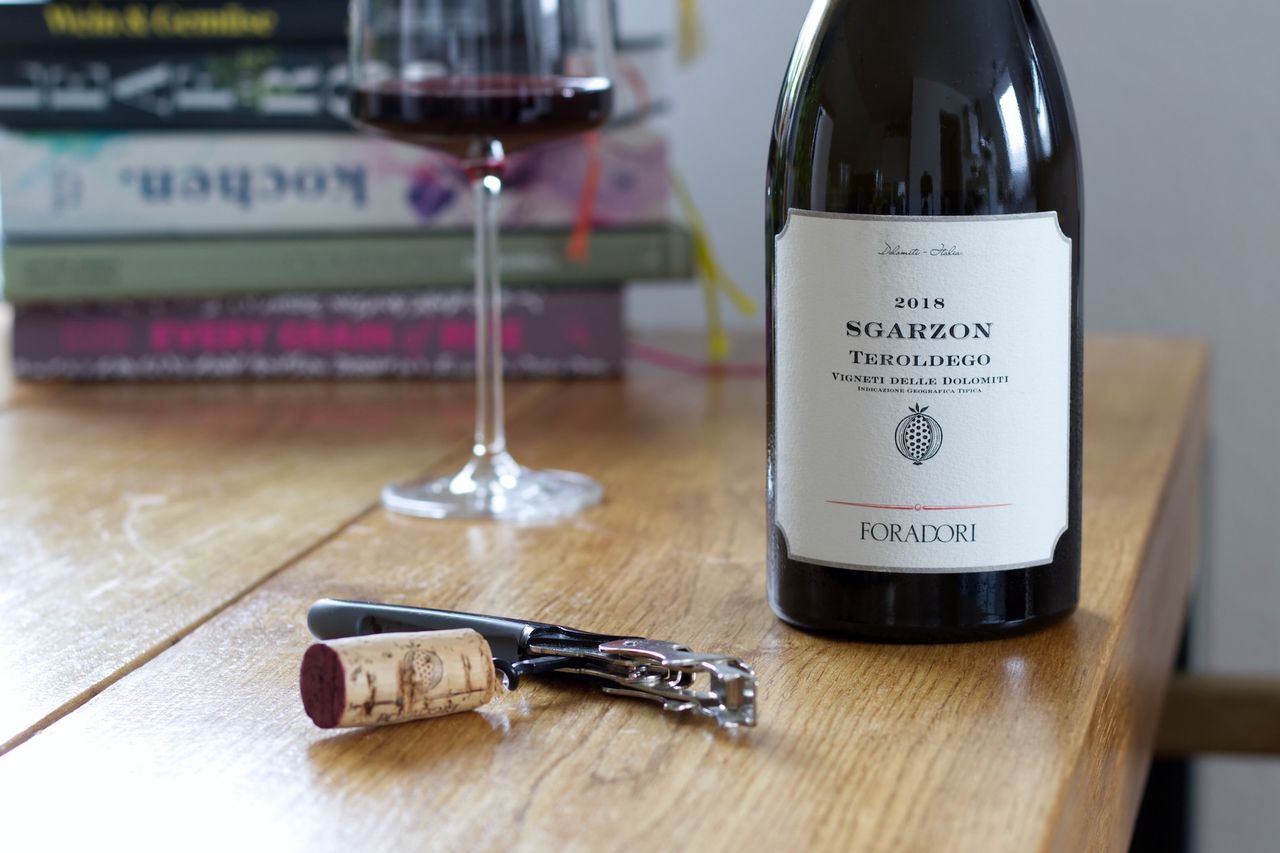Foradori - Sgarzon Teroldego 2018
We drink a bottle of Sgarzon Teroldego 2018 from the winery Foradori from Trentino.

I had to briefly check, because in the last years quite a few bottles have accumulated on this blog and I was not quite sure. But it is indeed the first wine from Trentino. I did not have to check for the question of whether it would also be the first bottle of Teroldego. Italy is simply a never-ending pot of autochthonous grape varieties, in which you can constantly find a new variety that you’ve never had in your glass, guaranteed, without having to dig around for long. According to Wikipedia, there are over 1000 registered grape varieties and still over 400 varieties permitted in a DOC. Teroldego is one of these many grape varieties. Today we are drinking a bottle of Sgarzon 2018 from the Foradori winery. The Vigneti delle Dolomiti IGT classification extends beyond Trentino to South Tyrol and part of Veneto and is roughly equivalent to the German Landwein, even if Indicazione Geografica Tipica somehow sounds more romantic. Elisabetta Foradori has run the eponymous winery since 1985, but has since passed the reins to the next generation. She started early to plant vineyards with old clones of Teroldego and has of course laid the foundation for the fact that today there is an insane variety of different wines of this grape variety in the winery, which also find a fair bit of international attention. The grapes for this wine come from the rather cool single vineyard Sgarzon, which lies between the two rivers Adige and Noce very close to the winery, and they are, like all grapes of the winery, biodynamically cultivated. This Sgarzon is left on the skins in clay amphorae for about 8 months and is then bottled unfiltered. Since a few years now, there is also another wine from the same site, which is aged even longer in amphorae.
The wine smells deep and dark. There are berries, there is cherry and there is always a note of freshness that I can not quite grasp. There is a bit of blood orange, some lilac and also a bit of wood, although the wine was not aged in wood at all. Behind the fruit comes a lot of spice. For a brief moment immediately after opening, there is also a feeling of carbonation on the tongue, but this disappears immediately after the first two or three sips. What does not disappear is the acidity. There is significantly more of it in the wine than one could have suspected when smelling and that makes the wine really extremely fresh in the mouth. Exactly this acidity then pulls down the back of the palate so enormously that you could drink non-stop. The tannin is super soft and dries only very slightly behind the freshness. This is really good.
The fruit gets a bit brighter overnight, cherryier, softer and a bit sweeter on the nose. This is now feel-good red wine, wellness for the nose, and a scent to sink your teeth into. Soft, intense, fruity with a tiny bit of lactic about it. When drinking, however, it lost exactly none of its acidity. At first sip, it’s actually quite a contrast between how it smells and how it tastes. Whereas, not so much how that tastes, rather between what that does on the tongue. But that comes together more and more with each successive sip and starts to complement each other perfectly. Velvety on the nose, with zing on the tongue. A great wine and a good starting point for more wines from Italy in the coming weeks. And there will also be grape varieties I’ve never heard of before, guaranteed. After all, in Italy, we can do that for quite some time.